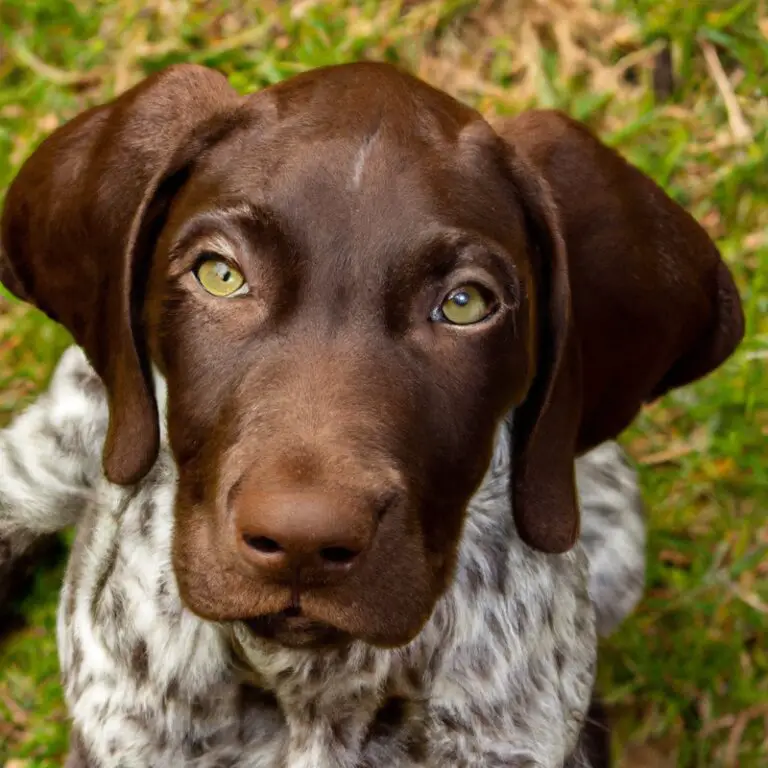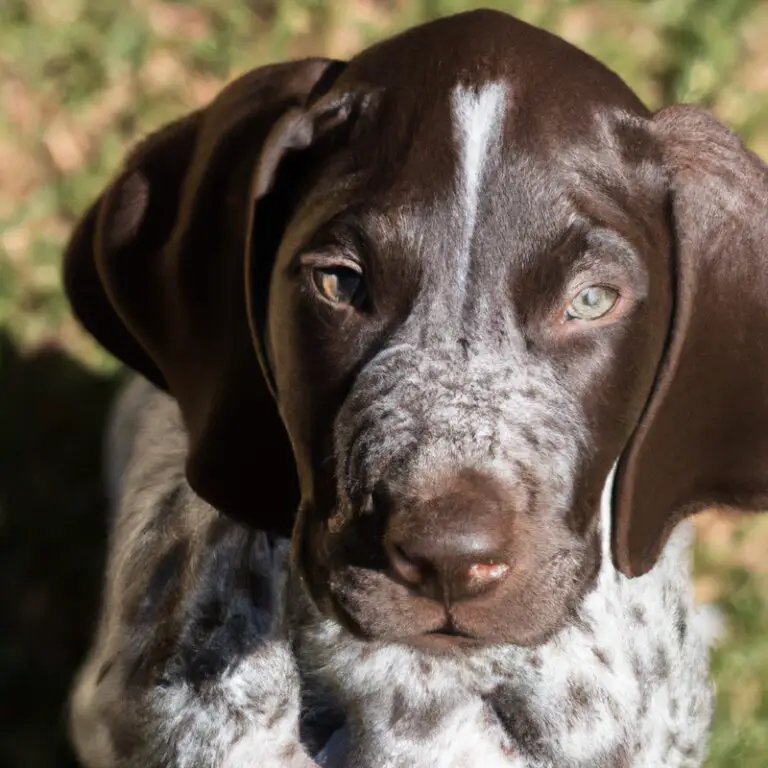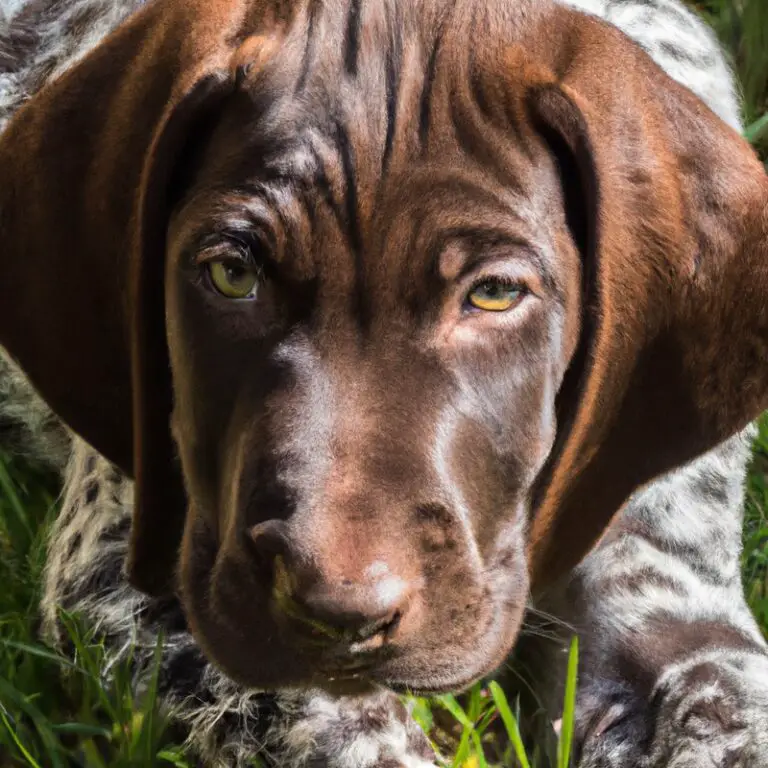Are German Shorthaired Pointers Good With Other Pets Like Fish Or Turtles?
Key Takeaways:
- German Shorthaired Pointers generally have a high prey drive, which may make them less compatible with small pets like fish or turtles.
- Early socialization and proper training can help German Shorthaired Pointers coexist more peacefully with other pets.
- Individual temperament and personality can vary, so not all German Shorthaired Pointers will exhibit the same level of compatibility with other pets.
- Supervision and caution should be exercised when introducing German Shorthaired Pointers to other pets, especially those of smaller size.
Are you a proud pet owner considering adopting a German Shorthaired Pointer? Then you’ve come to the right place! As an expert in the field, I’m here to share my knowledge on whether these versatile and sociable dogs are good with other pets, specifically fish and turtles.
German Shorthaired Pointers are known for their friendly and energetic nature, but it’s important to understand their temperament and evaluate compatibility before introducing them to other pets.
In this article, we’ll dive into the world of German Shorthaired Pointers and explore the potential challenges, solutions, and tips for successfully integrating them with your aquatic and reptilian friends. So, let’s get started and make sure your furry friend coexists harmoniously with your scaly and finned companions!
| German Shorthaired Pointers | Fish | Turtles |
| Compatibility | Not recommended | Not recommended |
| Description | German Shorthaired Pointers have a strong hunting instinct and may see fish as prey. They may try to chase or harm them. | German Shorthaired Pointers may be curious and try to play with turtles, which can cause stress or harm to the turtles. |
| Supervision required | Yes | Yes |
German Shorthaired Pointers: A Versatile and Sociable Breed
Understanding the Temperament of German Shorthaired Pointers
Understanding the Temperament of German Shorthaired Pointers German Shorthaired Pointers are known for their friendly and outgoing temperament. They are social dogs that generally get along well with other pets, including fish and turtles.
However, as with any breed, individual temperament can vary.
Some German Shorthaired Pointers may have a stronger prey drive and may be more inclined to chase or show interest in smaller animals like fish or turtles. It is important to introduce German Shorthaired Pointers to other pets gradually and under supervised conditions.
This allows them to become familiar with each other and establish positive relationships.
Proper training and socialization from an early age can also help in ensuring that German Shorthaired Pointers coexist peacefully with other pets.

Evaluating German Shorthaired Pointers’ Compatibility with Other Pets
When considering German Shorthaired Pointers’ compatibility with other pets, there are a few factors to keep in mind. First and foremost, it’s important to understand that each individual dog may have different tendencies and preferences.
However, German Shorthaired Pointers are generally sociable and can get along well with other pets when properly introduced and supervised.
It’s crucial to introduce them slowly and allow them to get to know each other in a controlled environment. Additionally, early socialization and training can greatly influence their behavior towards other pets.
Always monitor interactions and provide appropriate training and supervision to ensure a positive and harmonious relationship between your German Shorthaired Pointer and other pets.
Introducing German Shorthaired Pointers to Fish and Turtles
German Shorthaired Pointers and Fish: Can They Coexist?
German Shorthaired Pointers and fish can coexist in a household, but it’s important to take certain precautions to ensure a harmonious environment. Firstly, it’s crucial to provide a secure and inaccessible space for the fish tank to prevent any unwanted interactions.
Additionally, training your German Shorthaired Pointer to have a calm and gentle demeanor around the fish can help minimize any potential issues.
Regular supervision and proper introductions can also help establish positive associations between your dog and the fish.

Considerations for Keeping German Shorthaired Pointers with Turtles
Keeping German Shorthaired Pointers with turtles can be a challenging task. Here are a few considerations to keep in mind:
- Supervision is key: German Shorthaired Pointers have a strong hunting instinct. They may see turtles as prey and try to chase or harm them. Always supervise their interactions to ensure the safety of both pets.
- Separate living spaces: Turtles need their own enclosure and cannot be kept in the same space as the dog. This will prevent any potential conflicts or accidents.
- Training and socialization: Proper training and socialization are crucial for German Shorthaired Pointers. Teaching them to respect the boundaries of the turtle’s enclosure is important for the well-being of both pets.
- Prey drive management: It is essential to work on managing the Pointer’s prey drive through consistent training and positive reinforcement. This will help them understand that turtles are not to be chased or harmed.
- Consider temperament: Each dog and turtle has its own temperament. It’s important to assess the personality and energy level of your Pointer and select a turtle species that can tolerate their presence.
- Consult with a professional: If you are unsure about how to introduce and manage German Shorthaired Pointers with turtles, it is always a good idea to consult with a professional trainer or veterinarian who can provide guidance specific to your pets’ needs.

Tips for Successfully Introducing German Shorthaired Pointers to Other Pets
Giving German Shorthaired Pointers Positive Experiences with Fish or Turtles
Giving German Shorthaired Pointers positive experiences with fish or turtles is essential for their successful interaction. Firstly, introduce your dog to fish or turtles gradually.
Allow them to observe from a safe distance and reward calm behavior with praise or treats.
Secondly, supervise all interactions between your dog and the fish or turtles to ensure safety for both parties. Thirdly, provide a secure enclosure for the fish or turtles to prevent any accidental harm.
Establishing Boundaries and Rules for German Shorthaired Pointers and Other Pets
Establishing boundaries and rules is essential when introducing German Shorthaired Pointers to other pets. First and foremost, it’s important to set clear rules for both the GSP and the other pets in the household.
This helps create a sense of structure and predictability, which can reduce conflicts and promote harmony.
One effective way to establish boundaries is through consistent training. Teach your GSP basic obedience commands like “sit,” “stay,” and “leave it.” This will help them understand what behaviors are expected of them around other pets.
Similarly, it’s crucial to provide consistent training and reinforcement for other pets to ensure they understand the rules too.
Another aspect of establishing boundaries is creating separate spaces for each pet. This can be done by using baby gates, crates, or designated areas in the house.
This allows each pet to have their own space where they can feel safe and secure, reducing the chances of territorial disputes.
Supervision is key during the initial introductions. Always closely monitor interactions between your GSP and other pets, especially in the beginning.
If any signs of aggression or tension arise, quickly intervene and redirect their attention to something positive.
Potential Challenges and Solutions in Keeping German Shorthaired Pointers with Fish or Turtles
Addressing Prey Drive in German Shorthaired Pointers’ Interactions with Fish or Turtles
Addressing Prey Drive in German Shorthaired Pointers’ Interactions with Fish or Turtles First and foremost, it’s important to understand that German Shorthaired Pointers have a strong prey drive, which means they have a natural instinct to chase and potentially harm smaller animals like fish or turtles. This can make it challenging to keep them with these types of pets.
However, there are some solutions you can consider to help manage their interactions:
- Supervision: Always supervise their interactions with fish or turtles. This allows you to intervene if necessary and prevent any harm to the other pets.
- Separation: If you want to keep your German Shorthaired Pointer and other pets separately, ensure that their environments are securely separated, such as using separate rooms or enclosures.
- Training: Train your German Shorthaired Pointer to understand and respond to commands like “leave it” or “stay.” This can help redirect their focus and prevent them from chasing or harming the fish or turtles.
- Positive Reinforcement: Use positive reinforcement techniques, such as treats and praise, to reward good behavior when your dog interacts calmly or ignores the fish or turtles.
Managing German Shorthaired Pointers’ Energy Levels Around Fish or Turtles
Managing German Shorthaired Pointers’ energy levels around fish or turtles can be a challenge. These active dogs may have a natural hunting instinct, which can pose a risk to smaller pets like fish or turtles.
So, it’s important to take precautions to ensure their safety.
First, it’s crucial to provide proper training and socialization to your German Shorthaired Pointer. This will help them understand boundaries and reduce their prey drive.
Teaching them commands like “leave it” and “stay” can be helpful in managing their behavior around other pets.
Second, you can create a designated space or barrier to separate your German Shorthaired Pointer from the fish or turtles. This can be an aquarium lid or a separate area in your home.
It will prevent any accidental interactions and keep both pets safe.
Lastly, you can consider distracting your dog with toys or mental stimulation activities to redirect their energy away from the fish or turtles. Providing plenty of exercise and engaging them in games can help lower their energy levels and keep them occupied.
Final Verdict
German Shorthaired Pointers can coexist with other pets like fish or turtles, but it requires careful consideration and management. Understanding their temperament and introducing positive experiences are crucial for a successful introduction.
Establishing boundaries and rules, as well as addressing prey drive and managing energy levels, are key to prevent any potential challenges.
Overall, with proper training and supervision, German Shorthaired Pointers can live harmoniously with fish or turtles, making them a versatile and sociable breed for multi-pet households. Trust in these strategies and tips to ensure a peaceful and happy coexistence in your home.








